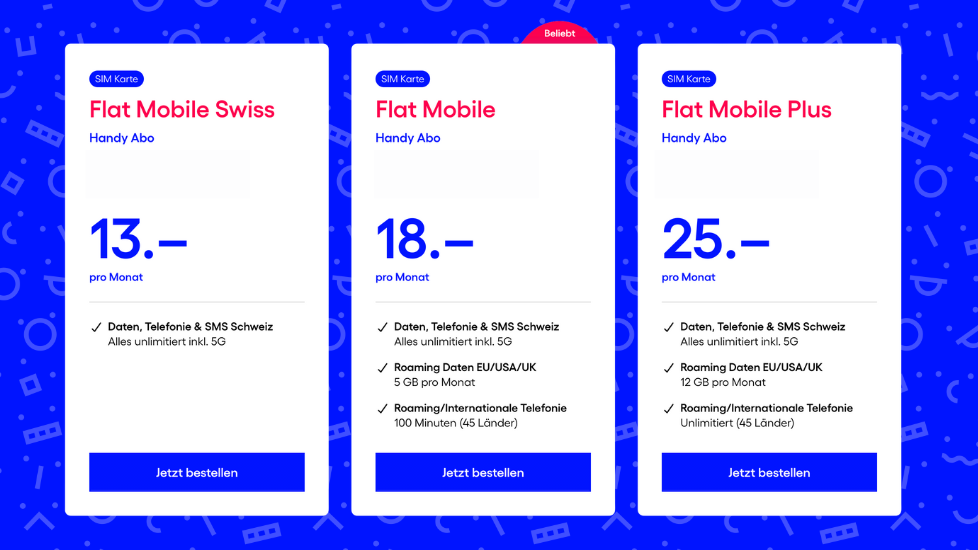Mobile internet for everyone and everything
IoT – When cellular is the better choice
Updated on August 11, 2025
The Internet of Things is already standard in many industries. Added to this are AI-supported solutions and autonomous M2M communication, all of which are based on communication channels and connectivity. It is therefore legitimate to ask, especially in new projects, what exactly this connectivity should look like. Can an existing network be used? Should the connection work regardless of location? If specialized solutions such as NB-IoT are excluded and wireless connectivity is retained, there are two options for most applications: either via the mobile network or via WiFi available at the location. Both have their advantages and disadvantages.
The WiFi Variant – For Location-Based Iot Applications

Advantages
Connectivity via WiFi is probably the most widespread and has been the standard for a long time. The IoT devices communicate with each other via a router and are connected to the Internet via modem. The advantages of this solution are that it is inexpensive to implement and the data traffic can be integrated into a local, usually already existing network. For many site-bound IoT applications, connectivity via WiFi is therefore an option, provided that an adequate Internet connection is available and the WiFi network is sufficiently secured.
The disadvantages of WiFi connectivity arise from the fact that a local network can only be used locally and not all IoT devices communicate with the router in an encrypted form. Sensitive data from sensors or cameras, for example, may be visible to third parties if the network is not adequately secured. In addition, with a WiFi solution, all IoT devices become dependent on a router. If this router malfunctions, communication between all devices that communicate via this router is interrupted. Depending on the area of application, this can lead to operational disruptions or security gaps, for example, if monitoring elements on sensitive production lines fail or hazardous goods are involved.
The cellular variant – For all mobile IoT applications and for more independence

Advantages
As the name suggests, the biggest advantage of a mobile connectivity solution is the mobility of the connection. An IoT device that communicates via mobile communications can be used anywhere where the corresponding mobile network is available. This makes applications in field service or asset and fleet management possible.
In addition, a mobile connection offers the advantage that each device establishes its own encrypted connection. This means, for example, that each surveillance camera operates independently of a router or other cameras in a company. In the event of an IT malfunction or camera failure, the other cameras continue to work and can still be accessed. The same applies to all other mobile-connected IoT devices. A system that communicates via mobile communications therefore benefits from individual encrypted connections between devices on the one hand and from the distribution and isolation of potential sources of interference or points of attack on the other.
Of course, a mobile connection also has its drawbacks. For example, each device requires a SIM card and a corresponding data plan from a provider. Depending on the provider, this can lead to additional costs for the cards and data packages. Digital Republic therefore offers a wide range of plans that are specifically tailored to IoT applications so that you never pay for anything you don’t need. You should also consider the mobile network coverage at the locations where the devices will be used to ensure sufficient connectivity. Since we at Digital Republic offer our services via the Sunrise network, you can easily check availability at your location here.
When Cellular Is the Better Choice for Your Iot Application:
Do you already have a professionally maintained and secure network infrastructure and only need your IoT devices at your network location? Then a solution via your existing WiFi is the ideal option.
However, if you rely on mobile connectivity, value an encrypted connection out of the box, or simply want a flexible solution without a lot of maintenance or backup effort, then a mobile connection is the better solution for you. At Digital Republic, we have made it our mission to meet precisely these requirements.
Our pricing system allows you to equip all your devices with the necessary connectivity without paying too much for unnecessary bandwidth. Your devices are online immediately via an encrypted connection. We also have no usage restrictions or fixed contracts. All our tariffs can be adjusted and canceled on a monthly basis. This makes mobile connectivity an uncomplicated all-rounder for IoT solutions and the better choice for anyone who wants to set up a mobile, future-proof, and flexible IoT setup.
Discover Our Other News Articles

The Development of Our Ideal Cell Phone Plans for Switzerland
The path to the current Trio Flat Mobile Swiss, Flat Mobile, and Flat Mobile Plus cell phone plans is also an example of how Digital Republic wants to function as a provider and where its priorities lie. We have quickly transformed ourselves from a pure data SIM provider to a cell phone plan provider. And we have completely rethought the development process.

The Affordable Mobile Provider With Award-Winning Service
When it comes to mobile providers in Switzerland, the wheat is often separated from the chaff when it comes to price. Either you pay little for your subscription and do without services like support or 5G, or you go to one of the big providers and pay more than you might like. At Digital Republic, you get both!

Why 5G Is Not Always Equally Fast
Sometimes fast, sometimes slow, sometimes suddenly 4G again. The network indicator on your smartphone suggests that it is connected to the internet via either 4G or 5G. In fact, a complex mechanism and a lot of communication between your smartphone and the network is taking place in the background to ensure that you always have the best possible connection.
